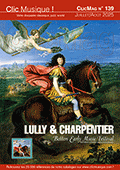 Si Sor ou Tarrega ont contribué à l’histoire de la guitare, c’est bien Andrès Ségovia qui en fera un instrument de concert à part entière. Très jeune, il se lance éperdument dans son étude, étant son propre professeur, développant technique et virtuosité à un point jamais atteint jusqu’alors. Se produisant sur les scènes mondiales les plus prestigieuses, il internationalise la guitare au point que de nombreux musiciens comme Torroba, Turina, Rodrigo ou Villa-Lobos composent pour lui, étoffant considérablement le répertoire, auquel il ajoute, nouveauté pour la guitare, ses propres transcriptions de Bach dont la fameuse chaconne. Enfin, il grave une discographie digne de l’instrument, de laquelle on retient une sonorité de jeu incomparable et moult enregistrements de référence. Sa renommée en tant qu’interprète a éclipsé son travail de composition qui se résume à diverses études et préludes ainsi que plusieurs ballades ancrées dans le folklore populaire espagnol auquel il était très attaché. Ces jolies pièces, d’une valeur musicale digne de figurer dans le répertoire par leur fraîcheur et leur profonde inspiration, sont interprétées avec lyrisme et conviction par le guitariste italien Alberto La Rocca, sans chercher à imiter le maître de Linarès de qui tout guitariste est un peu redevable. (Philippe Zanoly)  This recording presents the creative side of Andrés Segovia, the most important guitarist of the 20th century. Segovia helped to bring the guitar to the concert halls of the world, giving it equal status to the piano and the violin. He was the prime mover behind the enrichment of the guitar repertoire in the first half of the last century, commissioning many composers and having countless more works dedicated to him. However, his acknowledged status as a performer, his work as a composer has been largely ignored. Segovia wrote almost 50 individual works, most of them intimate miniatures, many of which are masterpieces just waiting to be discovered and enter the guitar repertoire. He was self-taught as both a guitarist and a composer. His study and transcriptions of music from Purcell to Granados evidently left their mark. The titles – Preludes, Studies, Variations and so forth – suggest that Segovia intended his music to be of practical use in teaching, and they do explore systematic areas of guitar technique. However, the character of these pieces is often intimate and is not tied to the trademark virtuosity of his playing; his poetic world was lyrical and introspective, occasionally tinged with an ironic or humorous touch. His style is close to that of the composers he loved most, such as the contemporaries, Ponce and Federico Moreno-Torroba above all, who wrote for him. However, there are also echoes of the Romantic guitar composers of the 19th century, including Tárrega, Llobet and traditional folk tunes from the Iberian peninsula. The selection made by Alberto Rocca includes the Oración, Remembranza and Estudio sin luz, which have become repertoire items for many guitarists. However, the album concludes with the much less commonly heard 23 Canciones populares de distintos países: harmonizations of folk songs from European countries, small and exquisite sketches
 |
